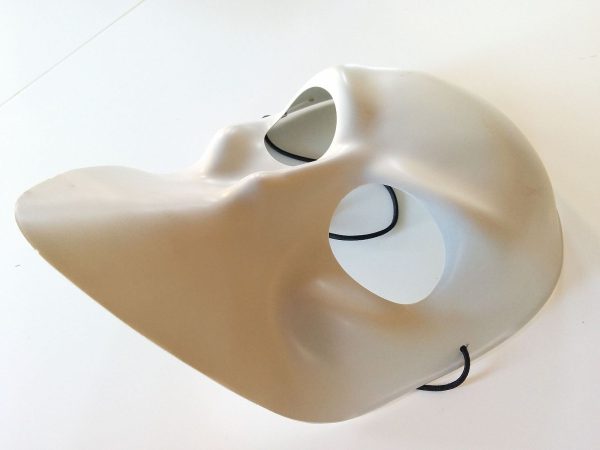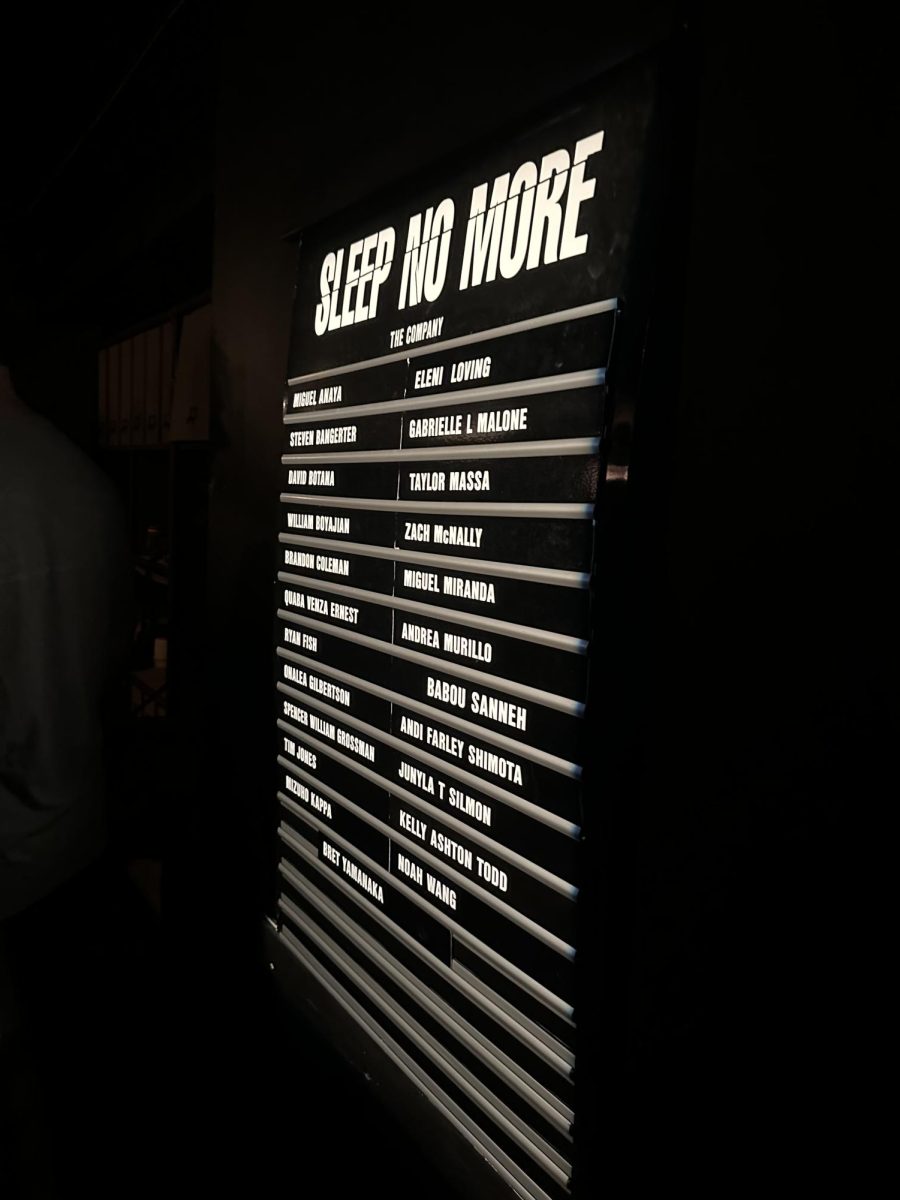And remember, fortune favors the bold. These are the last words you hear before you step off the elevator into your own journey.
Those who live in New York City are no strangers to the extraordinary, yet one experience continues to stand out for those seeking a taste of surreal escapism: Sleep No More. Hosted in Chelsea’s McKittrick Hotel, this immersive theater production is a sensory and psychological adventure, offering an escape into a world where reality blurs with fantasy. Upon stepping into the darkly lit, artfully distressed hotel, guests are handed a Venetian-style mask, with anonymity being key to the experience. The eerie environment feels like a cross between a noir film set and a dream gone wrong. Shadows cling to every corner, and the flickering candlelight creates an ambiance of lurking mystery. The immersive aspect is palpable, as audience members are invited to wander freely across multiple floors, interacting with the actors — who never utter a word — and the elaborate set designs.
Based on Shakespeare’s Macbeth, the production abandons traditional theater seating for a format where the audience becomes part of the story. Guests can follow the actors, explore the labyrinthine halls, or unearth cryptic messages tucked into desk drawers and behind hidden doors. Every room has its own energy: a twisted ballroom may host a sudden burst of performance art, while moments in a claustrophobic bedroom could quietly unfold into a scene of tragedy. The silence of the performers amplifies the unease, forcing the audience to pay attention to every movement, every detail, and every glance.

Yet, Sleep No More is as much about the environment as it is about the story. The set designers have carefully crafted each space with intricate period details, creating a heightened sense of realism. The faded elegance of the McKittrick Hotel, with its 1920s-style décor, emphasizes the decay and darkness central to the play’s themes. In many ways, the space itself becomes a character — a world both familiar and grotesque, filled with fragmented memories and fractured lives.
Sleep No More was created by British theater company Punchdrunk, which was founded by Felix Barrett in 2000. Barrett, the artistic director of Punchdrunk, is known for pushing the boundaries of traditional theatrical practices by creating performances that merge site-specific theater, interactive experiences, and innovative storytelling. His vision for immersive events allows the audience to explore the world of the experience without a fixed narrative path, making each viewer’s experience unique. Since you can individually choose which room and floor you walk into at any given time during your visit, everyone is able to experience each scene while it is occurring. Sleep No More allows you to visit a scene wherever and whenever during the script. Eventually, all these scenes blur into each other, as specific characters from rooms can begin to run off alone to a whole new section. This is why many people run after characters to try to catch the next portion of the story.
In creating Sleep No More, Barrett collaborated with choreographer Maxine Doyle, Punchdrunk’s associate director, who has been instrumental to the company’s success. Doyle’s background in dance and physical theater brings a deeply kinetic and atmospheric quality to the production, which relies heavily on movement rather than dialogue. The choreography, paired with the haunting, dreamlike environment of Sleep No More, transports audiences into a shadowy world inspired by Shakespeare’s Macbeth and the noir films of the 1940s.
The show debuted in London in 2003, and after several iterations, it opened in New York City in 2011, in a disused warehouse transformed into an elaborate multi-floor set. The creators envisioned an experience that would immerse the audience, giving them the freedom to explore various rooms, interact with objects, and follow characters at will.
Barrett and Doyle’s creation has garnered widespread acclaim for revolutionizing the theater-going experience by breaking the fourth wall. Sleep No More offers a progressive way of storytelling that empowers the audience to engage with narratives and space in a nonlinear and personal way, making it a landmark production in the evolution of contemporary theater.
Moreover, Sleep No More also taps into the nostalgia and allure of vintage New York. The McKittrick Hotel feels like a place suspended in time, evoking the darker side of the city’s past: the glamor, the grit of the Jazz Age, and the silent ghosts of old Manhattan. The meticulous set design feels like a love letter to the city, capturing both the attractions that define New York’s architectural history. Each room and floor is its own self-contained universe, filled with relics that make the experience as much about discovery as it is about performance. The library, the ballroom, and the atmospheric bedrooms each add another layer to the unfolding tragedy. For New Yorkers, it’s a fascinating reminder of how history and modernity collide within the city, and for visitors, it’s an immersive entry into a theatrical version of New York’s underworld. During the three hours you are there, you have no reminders of the modern world, besides the other guests that may be beside you.
Constructing these rooms required collaboration between set designers, architects, and builders, who had to transform the raw, industrial space of the warehouse into a fully functional environment. The set’s design also incorporated hidden passageways, allowing actors to move quickly between scenes, and secret rooms that could be discovered by curious audience members. The lighting and sound design played a key role in creating the haunting, dreamlike atmosphere, with carefully placed spotlights, shadows, and ambient noise enhancing the alluring mood.

Pictured is a blood-stained letter from Macbeth to Lady Macbeth – two characters from the storyline in Sleep No More. This prop is representative of the creativity and intricacies that Sleep No More puts into the smallest of details. (Photo Credit: Autopilot, CC BY-SA 4.0 <https://creativecommons.org/licenses/by-sa/4.0>, via Wikimedia Commons)
In one scene, Lady Macbeth obsessively washes her hands in a dimly lit bathroom. This act, taken from Shakespeare’s iconic “Out, damned spot!” moment, is portrayed with haunting intensity. The audience stands only inches away, watching as she scrubs at imaginary blood, symbolizing her guilt. The dark and moody lighting enhances the claustrophobic atmosphere, making it a deeply personal experience.
In another room, there is a grand ballroom where the infamous banquet scene unfolds. The very famous play Macbeth by William Shakespeare is known for the storyline of how an ambitious man and his wife, Macbeth, and Lady Macbeth, are willing to kill King Duncan in order to for Macbeth to become a King himself, but this, in turn, consumes both of them with immense guilt and paranoia.
In Sleep No More, Macbeth sees the ghost of someone he killed in the past, and the room fills with tension. Audience members are dispersed throughout the room, witnessing Macbeth’s paranoia rise to a fever pitch. The scene is choreographed to feel chaotic, as Macbeth’s breakdown is mirrored by frantic movements and ghostly figures emerging from the shadows.
There are dreamlike sequences set in the McKittrick’s forested areas, which evoke a stronger sense of otherworldliness. Actors move silently through the space, performing slow-motion choreography. These scenes often involve abstract movements rather than direct storytelling, adding to the mysterious and nonlinear narrative of the performance.
There is also a chilling scene in a hospital room where a murder is revealed. Here, a nurse wheels the character’s bloodied corpse through the space, an image of death and guilt that lingers with the audience. The silence, punctuated by soft, eerie music, intensifies the scene’s impact as the audience follows, weaving between rooms to glimpse more layers of the murder’s aftermath.
No longer bound by the etiquette of traditional theatrical storytelling, you are free to explore the narrative on your own terms. You can decide which characters to follow, when to intervene in an actor’s space, and how deeply to immerse yourself in the various storylines. This freedom enhances the thrill of the experience, allowing each individual to feel as though they are living out their own psychological drama within the world of the performance.
But Sleep No More is not without its challenges. The non-linear storytelling can leave some people feeling disoriented, unsure of where to go, or what to prioritize. Its abstract, sometimes macabre performances may alienate theatergoers looking for a more customary narrative arc. That feeling of disorientation is exactly what Punchdrunk chooses to convey. The name itself is the feeling that they want to exude — the feeling of being dazed, confused, and without clarity. However, for those open to surrendering to the dreamlike and chaotic energy, the experience is one of pure immersion.
After opening in 2011, Sleep No More is finally coming to an end after 13 years of production. Currently, the last performance will take place on Sunday, January 5th, 2025. Whether you are an avid theater goer, or you just want to expand beyond what you are used to, Sleep No More is definitely worth the experience. It may be intense at times, but once you step back from everything, you can come to respect and admire the work and effort of it all. Experiencing this was definitely an activity like no other, and I highly encourage others who feel fascinated to go visit before it comes to a final end.
Whether you are an avid theater goer, or you just want to expand beyond what you are used to, Sleep No More is definitely worth the experience. It may be intense at times, but once you step back from everything, you can come to respect and admire the work and effort of it all.

